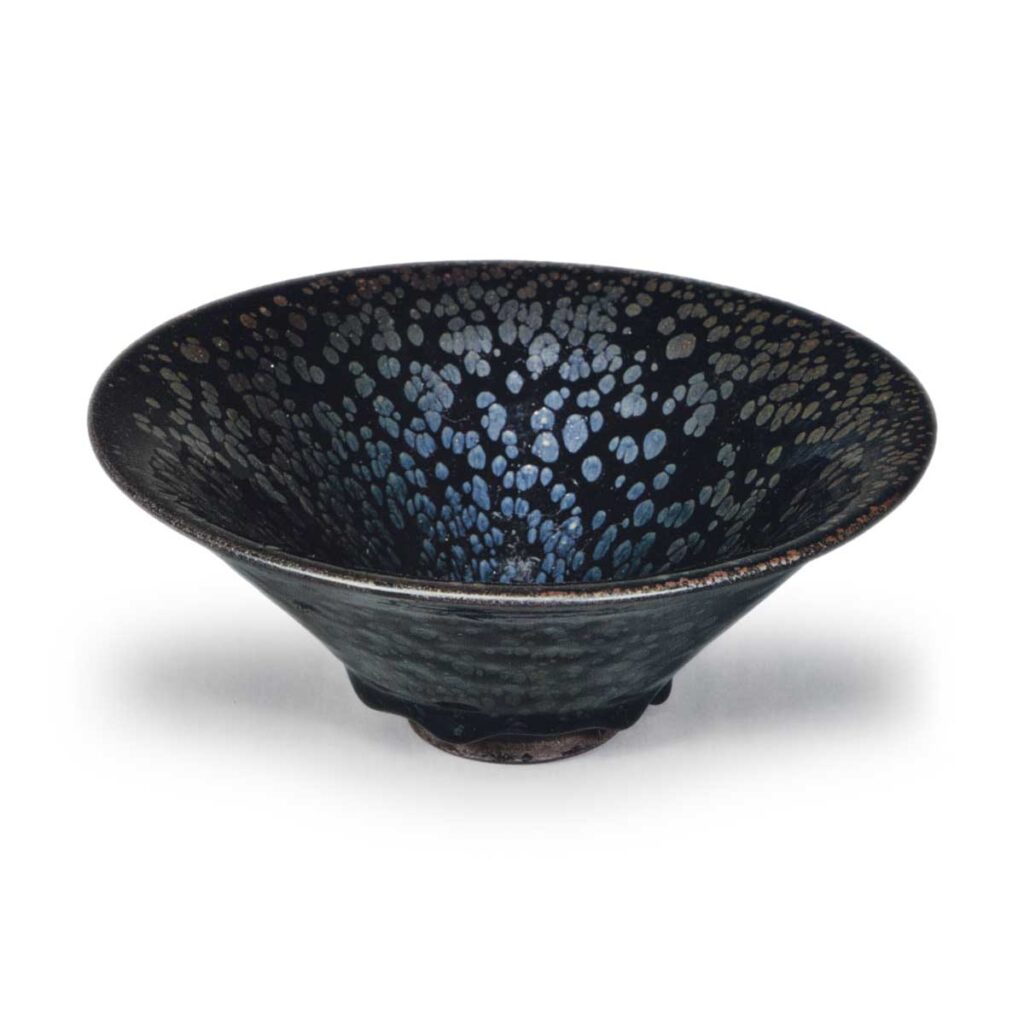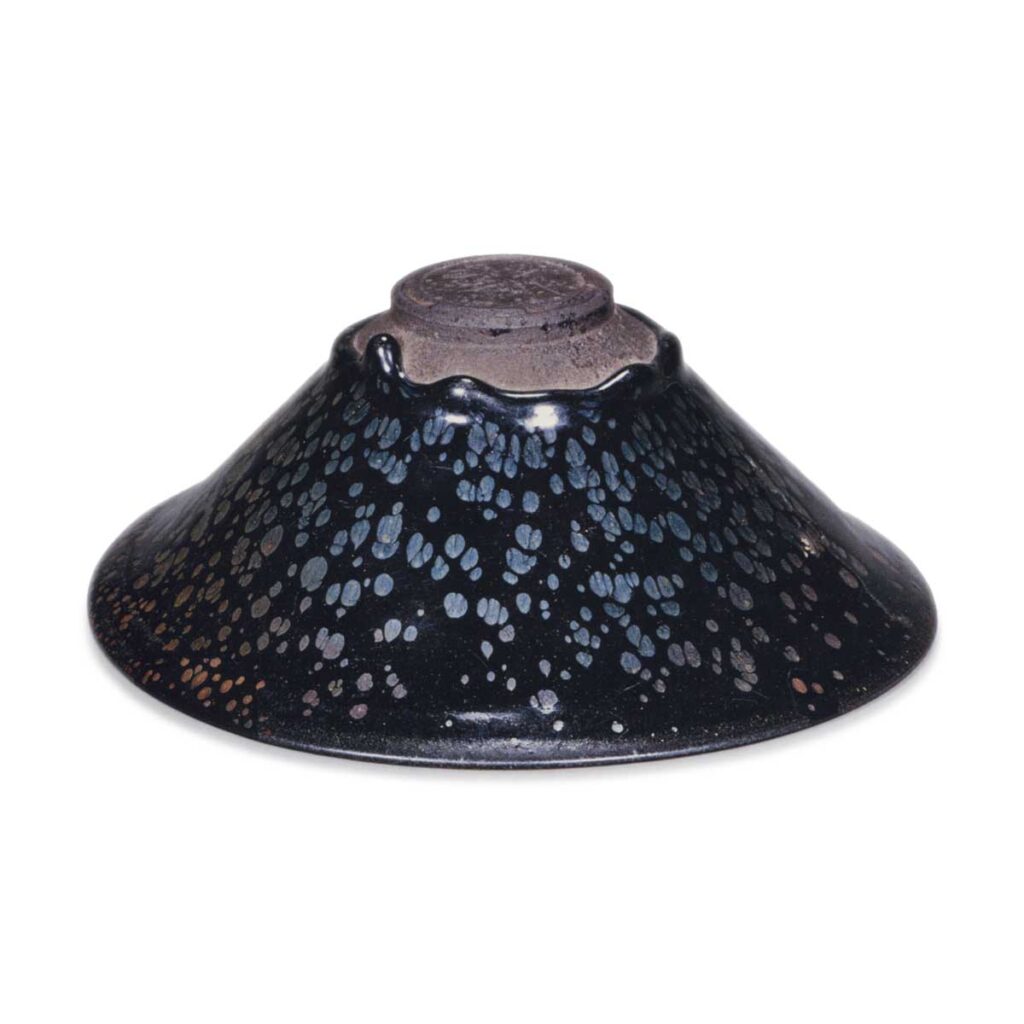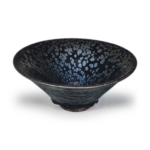

Important Cultural Property
Height: 7.7cm
Mouth diameter: 19.4cm
Outer diameter of base: 4.9cm
Height of the same: 0.7cm
This bowl, made in the Jian kiln in Fujian Province during the Southern Song dynasty, has an outwardly curved rim with large oil droplets floating magnificently on the entire surface inside and out. The kiln site of the Jian kiln is said to be covered with countless tenmoku shards, most of which are tea bowl shards. Apart from the tea bowl, there are only two other types of fragments, a bowl fragment about the same size as this bowl and a small bowl about 10 cm in diameter, that have fallen off, and no other fragments have been found.
The Jian kiln bowls are the few that remain, and only a few pieces were once even seen. There are only a few Jian ware bowls that have been found even in the past, and there are only a few oil drop tenmoku bowls. Although the base material, shape, and style are almost the same, the Freeya’s bowl has a smaller grain, while the Seikado’s bowl has a larger grain. Also, the Freya’s bowl does not have an inscription on the underside of the bottom, but this bowl has a character “Shin” engraved on the underside of the base.
There are many more pieces of Yusutitenmoku than Yohantenmoku, especially those made at kilns in the North China area, including jars, bottles and pots in addition to tea bowls. There are far fewer oil drops from the Jian kilns than from the kilns in northern China, and only a few tea bowls have been handed down to the present.
Oil droplets are iron crystals formed when the glaze surface boils and bubbles when the kiln is heated to a high temperature, and the iron rust on the glaze surface collects at the dented places where the bubbles volatilize. When it cools down slowly at the same temperature, it becomes oil droplets, but when the temperature becomes higher than that, it flows and becomes “Hago-chan” (兎毫盞). If the temperature is higher than this, the oil drops will flow and become rabbit-hair-can, which is commonly called “jasame” in our country.
The size of oil drops is determined by the thickness of the glaze. In the same way that thicker glazes produce rougher and finer penetrations, thicker glazes produce larger oil droplets, and thinner glazes produce smaller oil droplets. Both are considered rare masterpieces, but the reason why the Seikado oil droplets have large grains and the Freya Museum oil droplets have small grains is because of the thin glaze.
The same oil droplets from Huabei have a brownish tinge, while those from Jianya have a bluish-black appearance. This may be due to the fact that most of the North China kilns are oxidized flame-fired, while most of the Jian kilns are wood-fired and reduced.
This bowl is also covered with a thick layer of jet-black glaze on the slightly iron clay, and has large oil drops floating beautifully on the inside and outside. The bowl is thickly made with a wide mouth and the rim is slightly warped to the outside, and has a small low stand.
The inside of the base is shallowly chipped, and the character for “new” is engraved. In the kiln site of the Jian Kiln, there are pieces of tenmoku with inscriptions on the bottom such as “Zheng,” “Shen,” “Zhou,” “Liu,” “Gao,” “Ho,” “Dai,” “1,” “2,” “4,” “8,” “Wu,” “Hong,” “Huang,” “Shinryu,” and “New,” but it is not yet clear what the “New” means.








